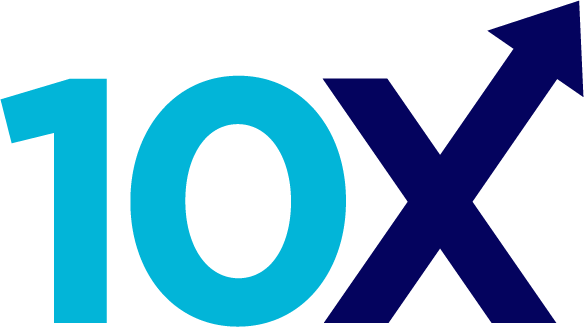You’ve Made the Ask – Now Answer, “Why Now?”

When you ask a prospective supporter for a contribution, one of the most common and reasonable questions you might face is, “Why now?” As Tom Ahern, a leading expert in fundraising communications, suggests; a powerful response to this question might be, “If we don’t do it now, bad things will continue to happen.” This approach, which Ahern calls “selling the threat,” can be incredibly effective, especially with the right audience. It taps into a fundamental aspect of human nature: the desire to avoid negative outcomes. But it’s not enough to simply highlight a threat – you need to connect it directly to the solution you’re offering. The Problem-Solution Framework As you’ve likely heard, the first step in successful fundraising is identifying the problem you’re trying to solve. It is about framing it in a way that resonates emotionally with your audience. Below are some questions that will help refine your message and ensure that it hits home: Is the threat or problem clear? Are the consequences of the problem easily understood? Does the problem seem credible and relevant to our lives today? Is it immediate? Does there seem to be a real sense of urgency? What’s Your Fight? Additionally, as Tom Ahern notes, effective fundraising often revolves around the concept of “getting people into the fight.” When you frame your cause as a fight against a specific problem – be it hunger, disease, or injustice – you invite your supporters to join you in a battle they believe in. This approach has several benefits: It attracts like-minded people who are passionate about the cause. It creates a sense of unity and direction, guiding everyone toward a common goal. It promises drama and conflict, which are essential elements in storytelling and fundraising. It implies a chance of victory, giving supporters hope that their contributions will lead to a positive outcome. So, ask yourself, What’s your fight? What problem are you tackling, and why should others join you? Once you’ve answered those questions, you’ll be well on your way to persuading your audiences to join you in your fight… right now.
What’s Your Answer to the Problem? Framing Solutions for Your Donors

In the world of fundraising, one of the most effective frameworks you can use to engage donors is surprisingly simple: Identify a problem, and present your solution. This approach, advocated by fundraising pioneer Richard Viguerie, cuts to the heart of why people give – because they believe in a solution that will make a difference. The Power of the Problem-Solution Framework The first step in any successful fundraising campaign is to clearly define the problem or threat you’re addressing. This step is crucial because it taps into the emotions of your potential donors – fear, anger, sadness – and creates a sense of urgency. But once you’ve laid out the problem, the next step is just as important: convincing your donors that you have the winning solution. Here’s how this works: Dissatisfaction with the current state: Your donors recognize that something is wrong, and it’s affecting their lives or the world around them. A vision of a better state: They can see a future where this problem is solved, where things are better. A path to get there: Your organization provides a clear, actionable plan to achieve this better future. This model, drawn from Austrian economist Ludwig von Mises’ Human Action framework, is foundational to motivating donors to act. Making the Case for Your Solution Once you’ve established the problem, your next challenge is to demonstrate that your organization is best positioned to solve it. This involves more than just stating your solution – it requires making a compelling case with details, timelines, budgets, and metrics for success. But even with a strong problem-solution framework, you might still encounter tough questions from potential donors: “Why should I go with you?” “Your competitors are more established and claim they can solve the problem faster and cheaper.” These are valid concerns, and they underscore the need for differentiation. This is where Viguerie’s Four Horsemen of Marketing – positioning, differentiation, benefit, and brand – become critical. Differentiation: Standing Out in a Crowded Field To persuade donors that your solution is the right one, you need to stand out. This is where positioning comes into play. Jack Trout, the marketing guru who popularized the concept, emphasized the importance of owning a unique space in the marketplace – a position that only your organization can claim. When donors think of the problem, they should think of you as the go-to solution. And when they think of your organization, they should immediately associate you with solving that specific problem. But positioning alone isn’t enough. You also need to clearly communicate the benefits your solution offers and build a strong brand that resonates with your audience. This is how you differentiate yourself from competitors who might have more experience or a longer track record. The Challenge of Simplicity It’s tempting to think that because the problem-solution framework is simple, it’s also easy to implement. But simplicity doesn’t equal ease. Crafting a compelling solution that stands out and resonates with donors requires careful thought, planning, and execution.
What’s Your Offer? Crafting the Right Appeal for Your Donors

In the world of fundraising, the key to unlocking generous contributions lies in one simple question: What’s your offer? Why should someone part with their hard-earned money to support your cause? The answer to this question is your offer – the benefit your prospective donors receive in exchange for their contribution. And let’s be clear: without a perceived benefit, why would anyone give? The Art of Crafting a Compelling Offer Your offer is more than just a pitch; it’s a crucial part of the exchange between your organization and your donors. It’s similar to any voluntary transaction you’d make in the marketplace. In fundraising, your offer promises a solution to a problem that resonates deeply with your donor. Let’s consider some examples: “You and I can feed a hungry child for $2.45 a day. For $24.50, we can feed 10 hungry children. And for $245, we can feed 10 hungry children for 10 days.” “A generous contribution of $1,000 will enable me to buy critically important radio advertisements to help us get our message out to key groups of undecided voters.” “Together with the support of tens of thousands of generous contributors just like you, your monthly gift of $100 will truly help us find a cure for cancer.” “Your generous contribution of $3,500 provides a scholarship to one of our best summer internship candidates, allowing them to gain valuable experience and leadership skills they otherwise wouldn’t receive. These are the leaders of tomorrow.” Each of these offers does more than just ask for money; it articulates the benefit to the donor, whether it’s feeding children, influencing voters, curing cancer, or developing future leaders. But the benefit isn’t always tangible. It could be the emotional satisfaction of knowing they’ve helped feed starving children, the alignment with their moral or societal values, or the recognition that comes with membership in a special society. The Importance of a Well-Crafted Offer As a passionate believer in your cause, you know how critical your mission is. But your donors have busy lives, with countless priorities competing for their attention and resources. To persuade them to invest in your vision for change, your offer must clearly answer: What’s in it for them? Lets talk about how to take your BHAG – your Big, Hairy, Audacious Goal – into the donor marketplace. These are the first two critical steps: What is the Problem You’re Working to Solve? What is Your Proposed Solution to that Problem? Now, it’s time for the third step: Crafting the Right Offer. What are you asking your prospective donors to do, and how will they benefit from doing it? Real-World Example: A $1 Billion Offer A recent example of a compelling offer comes from the incredible story of Ruth Gottesman, a 93-year-old widow who committed $1 billion for student scholarships at Albert Einstein College of Medicine. Her offer? To cover all future tuition for students at the medical school, ensuring that new doctors can start their careers without the burden of debt. But what fueled her desire to make such a significant gift? It wasn’t just the amount of money – it was the solution her gift provided to a problem she cared deeply about. The offer was clear, powerful, and aligned with her values.
Your List is Your Market: The Underrated Key to Fundraising Success

When it comes to crafting a successful fundraising campaign, it’s easy to get caught up in the appeal of a well-crafted offer or the visual impact of creative design. But what if I told you that neither of these is the most important element of your campaign? Surprising as it may sound, your list—the people you choose to target—is far more critical than your offer or your creative combined. Why Your List Matters More Than Anything Else Let’s rewind for a moment and discuss how to lay a solid foundation for your Big, Hairy, Audacious Goal (BHAG). We’ve explored three crucial steps: Identifying the Problem: What issue are you addressing? Proposing a Solution: How do you plan to solve this problem? Crafting Your Offer: What benefits do you promise to your donor in exchange for their support? Now, you’ve caught your prospective donor’s attention with the problem you’re tackling, they’re intrigued by your solution, and your offer is appealing. Great! But what happens if you deliver this message to the wrong people? As Richard Benson famously declared in his book Secrets of Successful Direct Mail: “The offer is the second most important ingredient of direct mail. Lists are the most important ingredient.” And Ben Hart echoes this in Fund Your Cause with Direct Mail: “The list, or list segment, you select for your mailing is more important than the letter itself.” Simply put, your list is your market. Without the right audience, even the most compelling message will fall flat. The Universal Rule: Lists Matter Across All Fundraising Channels Some of you might be thinking, “Sure, lists are crucial for direct mail, but I’m focused on major-gift proposals, fundraising galas, or one-on-one solicitations.” The truth is, this rule applies across all forms of fundraising. Whether you’re sending out direct mail, planning an event, or setting up meetings with potential donors, the people you choose to target are the most critical factor in determining your success. Why? Because your list represents your market. It’s the group of people most likely to be interested in what you’re offering. If you’re targeting the right people, you’ve already won half the battle. Making the Most of Your List So how do you ensure that you’re targeting the right people? Here are a few strategies to consider: Research: Understand who your current donors are and what motivates them. Look for prospects who share similar interests, values, and giving habits. Segmentation: Don’t treat your list as a monolith. Segment your audience based on factors like giving history, interests, and demographics to create more personalized and effective campaigns. Testing: Continuously test different segments and approaches to refine your list and improve your results. Conclusion: Focus on What Really Matters At TenX Strategies, we believe that focusing on the right list is the key to unlocking your fundraising potential. While your offer and creative are important, they won’t get you very far if they’re delivered to the wrong audience.
Navigating the Noise: How Smart List Segmentation Cuts Through the Clutter

In today’s fast-paced world, we’re all bombarded with countless demands on our time and attention. Whether it’s emails, social media notifications, or ads, it’s easy to feel overwhelmed. As fundraisers and marketers, this reality presents a unique challenge: how do we ensure that our messages stand out in a sea of distractions? The answer lies in understanding the power of relevance—and that’s where list segmentation comes into play. The Challenge: Competing for Attention With thousands of ads vying for our attention every day, it’s no wonder that people have developed a habit of filtering out anything that doesn’t immediately seem important. As fundraisers, we need to recognize that what’s important to us might not automatically be important to our prospective donors. To cut through the noise, we need to make our communications as relevant as possible to the recipient. This means tailoring our messages not just to broad audiences, but to specific segments of our donor base. The Power of List Segmentation List segmentation is more than just a trendy buzzword—it’s a powerful tool that allows you to meet your donors where they are. By understanding your audience’s unique characteristics and behaviors, you can craft messages that resonate on a personal level. As Jerry Panas, a legendary figure in fundraising, wisely noted: “In direct mail, target marketing and proper segmentation is essential—because it allows you to meet the prospects at their thinking and giving level.” Here’s how you can apply segmentation to create more effective, personalized communications: Tailor Your Messages to Specific Groups: Whether it’s acknowledging past contributions, referring to shared experiences, or highlighting relevant milestones, personalized messages demonstrate that you understand and value your donors as individuals. Develop Distinctive Strategies for Each Segment: Don’t segment just for the sake of it. Each segment should have a specific strategy designed to appeal to their unique motivations and interests. Make Your Communications Personal: The more personal your message, the more likely it is to resonate. Whether you’re referencing a donor’s past involvement or connecting with them on a shared passion, personal touches make your communications stand out. Examples of Effective Segmentation Here are a few ways you might consider segmenting your lists to create more targeted and effective communications: Past Event Participants: Reach out to donors who attended a specific event, such as your Tenth Anniversary Gala, with a message that highlights the impact of their participation and invites them to the next milestone celebration. Loyal Long-Term Donors: Acknowledge donors who have been supporting your cause for a significant period, such as 15 years. Celebrate their commitment and show how their continued support is making a difference. Lapsed Donors: Re-engage donors who haven’t contributed in over two years with a message that emphasizes the importance of their past support and how they can continue to make an impact. Geographic Segmentation: Tailor your communications to donors in specific regions, addressing local issues or events that are relevant to them. By making your communications more relevant to each segment, you increase the likelihood that your message will be noticed, read, and acted upon. Conclusion: Relevance is Key In an over-communicated world, relevance is the key to cutting through the clutter. By leveraging list segmentation, you can create messages that speak directly to your donors’ unique interests and circumstances. This personalized approach not only helps you stand out but also strengthens your connection with your donors, leading to more meaningful and successful engagements.
Fishing Where the Donors Are: The Critical Role of Targeting in Fundraising

In fundraising, casting a wide net isn’t always the best strategy. Just like in fishing, where you cast your line matters just as much—if not more—than the bait you use. To maximize your fundraising efforts, you need to ensure you’re reaching the right audience with the right message. This is where targeted list selection becomes crucial. Getting Your List Selection Right As you refine your fundraising strategy, consider this: the lists you choose to target are just as important as the content of your message. A well-selected list ensures your message reaches those who are most likely to respond positively. Dan Sonners, Vice President of Conrad Direct and an expert in list brokerage, puts it simply: “List selection has only grown in importance to the fundraising process… Today there are more ways than ever to target your ideal audience.” The right list broker can help you navigate the complex landscape of data to identify the most responsive donors. Whether you’re targeting those who have recently given to similar causes or tailoring your approach to specific donor profiles, a strategic list selection can dramatically increase your chances of success. What a List Broker Can Do for You A list broker does more than just provide you with names and addresses—they act as a strategic partner in your fundraising efforts. They bring invaluable insights into the nuances of different lists, helping you choose the ones that align with your campaign goals. Sonners explains: “Your list broker is like a mountain guide. They help you navigate the terrain and reach your goal, even in the face of unexpected challenges.” List brokers understand the subtleties of different lists, such as how certain donors respond to specific package types, writing styles, or premiums. This knowledge allows them to recommend the best lists for your campaign, ensuring that you’re fishing where the donors are. Why Collaboration Is Key Integrating list selection into your overall fundraising strategy from the start is essential. Rather than treating lists as an afterthought, involve your list broker in the planning process early on. This collaboration can reveal opportunities you might have otherwise missed, leading to a more effective and targeted campaign. Again, from Sonners: “List professionals can add a lot of value, many times in unexpected ways… The more we help our mailers succeed, the more we all succeed.” By collaborating with your list broker and other fundraising partners—such as copywriters, creative teams, and digital strategists—you can create a comprehensive and effective campaign that resonates with your target audience. Conclusion: Reaching the Right Audience No matter how compelling your offer or how well-crafted your message, it won’t generate results if it’s sent to the wrong audience. Just as in fishing, where even the best bait won’t yield a catch if you’re in the wrong spot, your fundraising efforts will fall flat if you’re not reaching the right people. By prioritizing targeted list selection and collaborating with a skilled list broker, you can make sure that your message reaches the right people at the right time, maximizing your impact and driving better results.
Is D-Day Still Relevant?

Introduction: Eighty years ago, on June 6, 1944, one of the most significant military operations in history was launched—Operation Overlord, better known as D-Day. This event marked the largest seaborne invasion ever executed, with 160,000 Allied troops storming the beaches of Normandy, France, in a massive effort to defeat Nazi Germany. The success of D-Day was pivotal, setting the stage for the eventual downfall of Hitler’s regime. But as we commemorate this historic event, we must ask: Is D-Day still relevant today? Relevance of D-Day: The significance of D-Day extends beyond its immediate military impact. It serves as a powerful example of visionary leadership, strategic planning, and courageous decision-making. These are qualities that remain just as relevant in today’s world, particularly in the realm of nonprofit leadership and fundraising. D-Day teaches us the importance of having a clear vision and objective. The Allies knew that opening a second front in Europe was essential to defeating Hitler. This was their objective, and every aspect of their strategy and planning was designed to achieve this goal. The same principles apply to nonprofit organizations today. To achieve success, you must have a bold vision, clear objectives, a well-thought-out strategy, and a detailed plan of action. Leadership and Bold Vision: One of the key lessons from D-Day is the importance of leadership. As Richard Viguerie aptly noted, a lack of entrepreneurial leadership is holding many nonprofits back. Too often, leaders are risk-averse, afraid of failure, and unwilling to cast a bold vision. This fear stifles innovation and limits the potential impact of an organization. Just as the success of D-Day required bold and decisive leadership, so too does the success of any nonprofit organization. Your Role in Advancing Your Mission: As a leader in your organization, it’s crucial to ask yourself how you can contribute to establishing a bold vision and developing a strategic plan that drives transformational growth. What risks are you willing to take to achieve your objectives? How can you lead your team with courage and conviction, just as the Allied leaders did during World War II? Conclusion: The relevance of D-Day lies not only in its historical significance but also in the lessons it offers for leadership, strategic planning, and bold decision-making. As we reflect on this pivotal moment in history, let’s commit to applying these lessons in our own work, pushing the boundaries of what’s possible for our organizations.
Want to 10x Your Fundraising?
If you’re looking to super-charge your donor acquisition and increase giving from your existing supporters, then consider the power of testing. It’s a game-changer. We’ve all seen unexpected trends. Many organizations experienced a surge in giving during challenging times, only to hit a wall later. What can you expect now? And more importantly, how can you start boosting your efforts today? Here are a few key areas where you can focus: Acquire new donors online using advertising, content marketing, and optimization strategies. Increase giving simply by refining your platforms—updating your website, donation pages, and overall donor outreach. Leverage new technologies like ConnectedTV to expand your message and reach more supporters. The key to success? Continual testing and research. Experts in the field have helped transform the fundraising efforts of countless organizations by focusing on what works and refining what doesn’t. Testing isn’t just an option—it’s a necessity for those who want to grow their impact. Ready to dive deeper into how testing can drive your fundraising? Let’s explore together how you can apply these strategies to 10x your efforts.
What Risks Are You Willing to Take?
The Irish satirist Jonathan Swift once quipped, “He was a bold man who first ate an oyster.” It makes you wonder, doesn’t it? Who was the person brave enough to crack open that shell and take a chance on something entirely new? This spirit of boldness is relevant to us as fundraisers and marketers—we’re probably not taking enough risks. Testing new ideas, challenging norms, and experimenting with innovative approaches are often the keys to success, yet how often do we find ourselves sticking with what’s safe? Are You Testing Enough? How many times have you embarked on a project you were certain would work, only to see it fall flat? Conversely, how many times have you doubted a new idea, only to be surprised when it took off? Testing isn’t just a good practice—it’s crucial. Even the most experienced pioneers in fundraising and direct marketing have been proven wrong and learned from their testing processes. Some of the best innovations come from what seem like the riskiest, most contrarian ideas. The key is to test everything: from your offers and messaging to your donor outreach methods and event strategies. The Importance of a Contrarian Approach Throughout direct marketing history, many of the greatest successes have come from taking a contrarian approach. Here are a few lessons learned from years of testing: Long letters can outperform short ones. Simple language and short sentences, even with highly educated audiences, are effective. Asking again from recent donors, rather than waiting, can bring in more gifts. Postal mail, while some say it’s fading, remains powerful. Testing is about embracing these unconventional approaches and seeing what sticks. You won’t know until you try, and the results might surprise you. What Should You Be Testing? The short answer? Everything. You can test: Different types of appeals or offers to your donors Various letter signers or subject lines in email campaigns Packaging designs, list segmentation, and reply devices Even the format and approach of events or new channels like ConnectedTV The opportunities for testing are endless, and testing helps refine your strategy, leading to better results and long-term success. So, what risks are you willing to take today? What can you test to uncover a breakthrough in your fundraising or marketing? Embrace boldness, and you might just discover the next great idea that will propel your organization forward.
What Risks Are You Willing to Take?

The Irish satirist Jonathan Swift once quipped, “He was a bold man who first ate an oyster.” It does make you wonder, doesn’t it? Who was that person brave enough to try something entirely new? Whether it’s cracking open an oyster, trying a mushroom, or experimenting with an unfamiliar dish like blood pudding—there’s a valuable lesson here for fundraisers and marketers: we’re often not taking enough risks. Are You Testing Enough? How many times have you started something you were sure would work, only to find it didn’t? Or maybe you doubted someone else’s seemingly outlandish idea—only to be proven wrong when it succeeded. These experiences highlight a key truth: testing is crucial. The most innovative breakthroughs often come from taking risks and experimenting with different approaches. It’s the contrarian ideas—the ones that defy convention—that can lead to unexpected success. The Power of Testing in Fundraising What should you be testing? Almost anything and everything. From the offer you present to donors, to the way you communicate with them, to the timing and method of your outreach—there’s always room to explore new approaches. Some examples of things to test include: Letter signers and formats List segments and targeting Postal mail vs. email outreach Event recruitment strategies It’s not just about direct mail—it can be your web page, email marketing, or even newer methods like ConnectedTV. Testing allows you to learn what works and what doesn’t, helping you refine your strategy and improve your overall effectiveness. The Importance of Taking Risks Fundraising, like many aspects of life, often rewards those willing to take calculated risks. If you only play it safe, you might miss out on significant opportunities for growth and innovation. Being bold in your approach—whether that’s testing new strategies or pushing the boundaries of what’s possible—can lead to unprecedented results. So, what risks are you willing to take? What tests can you start running today that might lead to breakthroughs for your cause? Taking risks isn’t easy. But the rewards can be enormous. Let’s embrace the bold mindset needed to drive real impact and Go Big!

